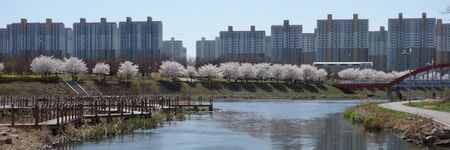Ansan Korea
- Members
Ansan is a city located in Gyeonggi Province, South Korea. It is a bustling urban center known for its industrial development, cultural diversity, and educational institutions. Ansan was established as a city in 1986 and has experienced rapid growth over the years. The city is a prominent industrial hub, hosting various manufacturing and technology companies. Ansan is also known for its vibrant multiculturalism, with a significant population of foreign residents, particularly from Southeast Asia. The city embraces its diverse cultural heritage and offers a wide range of international cuisine, markets, and festivals. Ansan is home to several universities and research institutes, contributing to its reputation as an educational hub. The city features numerous parks, recreational facilities, and shopping districts, providing residents and visitors with a vibrant urban lifestyle. With a population of approximately 747,035, Ansan offers a blend of economic opportunities, cultural vibrancy, and a dynamic living environment.
Activities

|
Gyeonggi Provincial virtual power plant in Gyeonggi Open Platform for Smart city | |
This is a project concept which is to create citizen-led, decentralized, local energy-based society that builds foundations on which the distributed resources (ESS, solar power) in the region that can proliferate profitable models which citizens invest, own, trade and operate.
| ||

